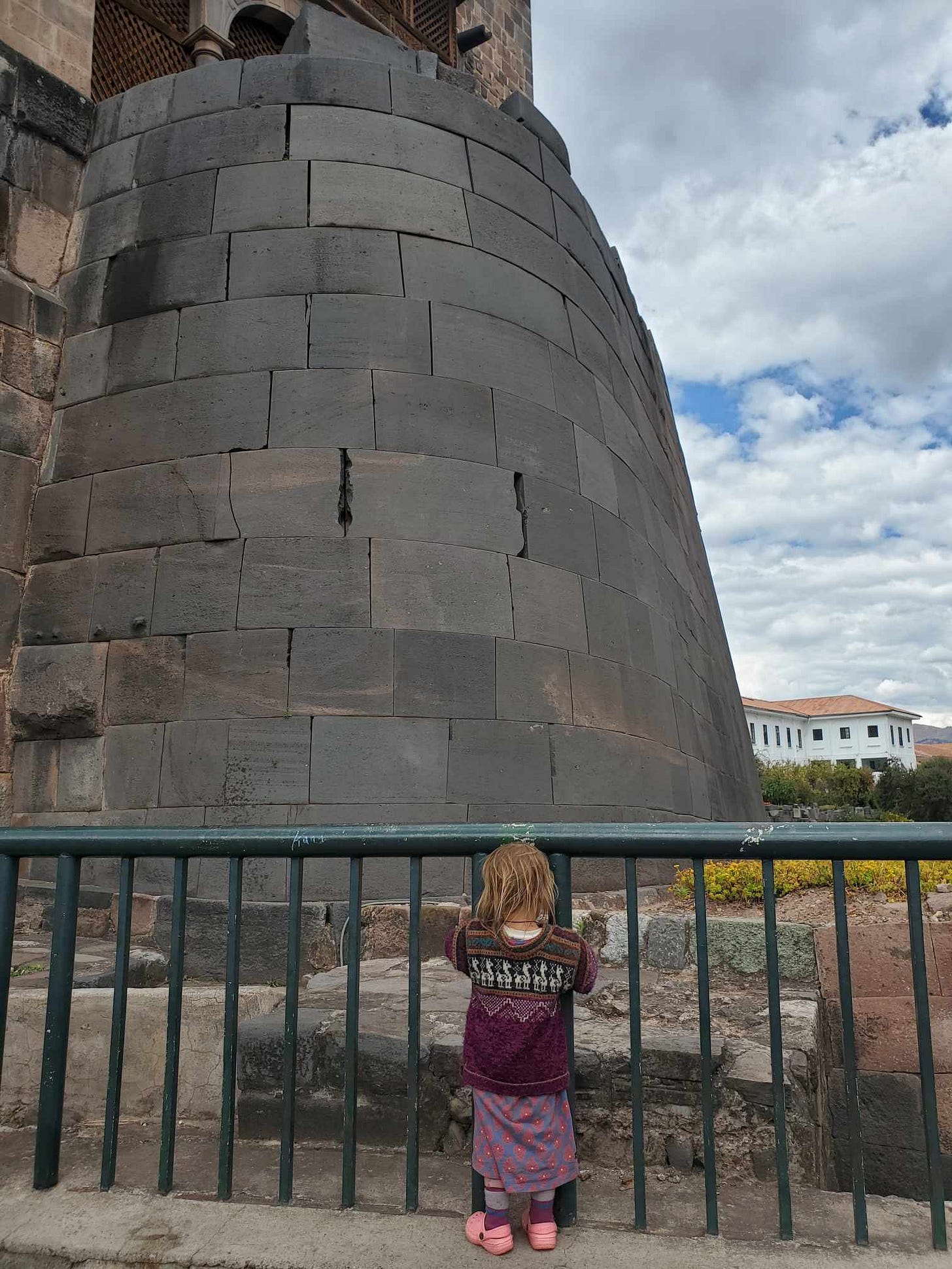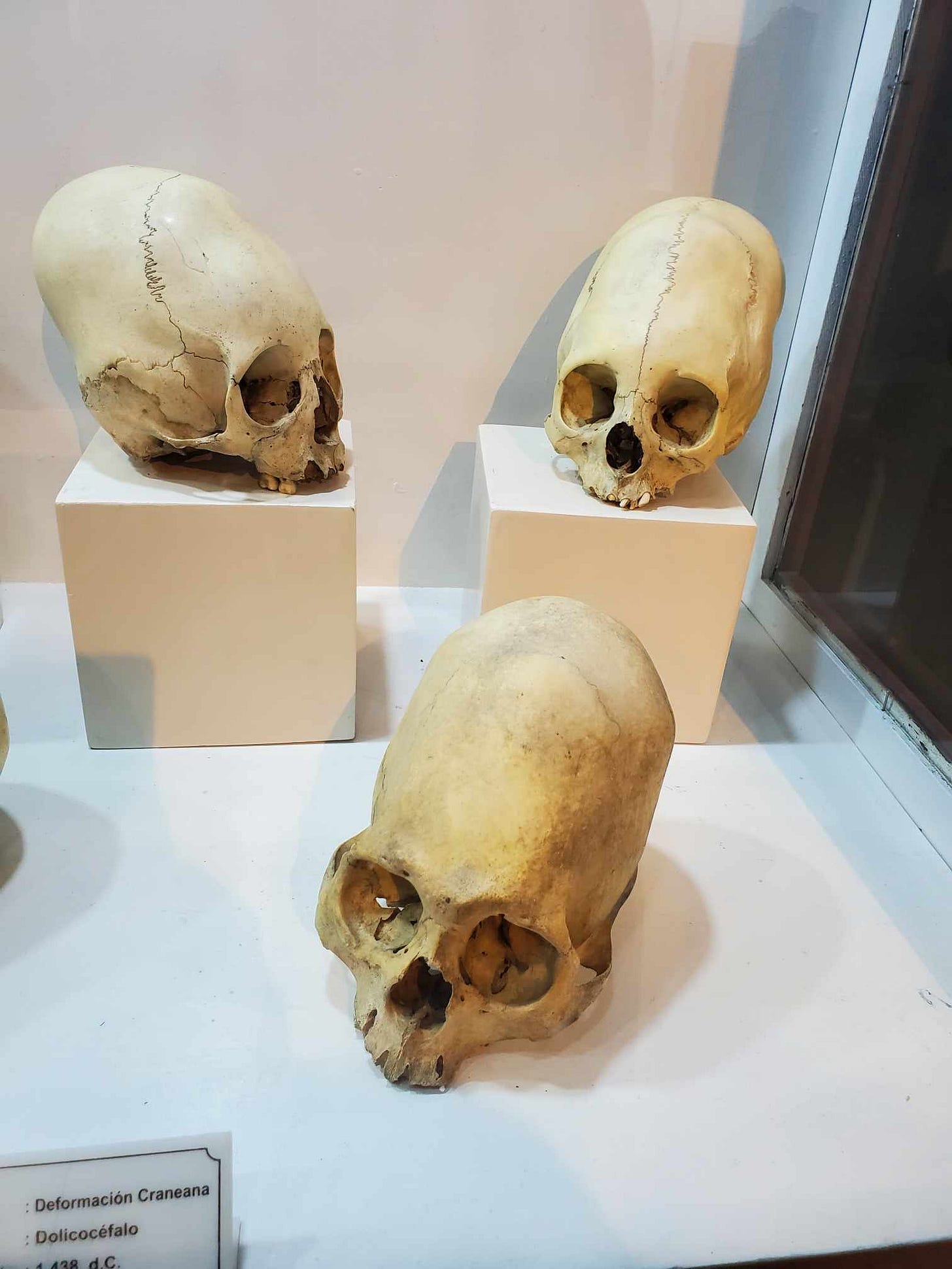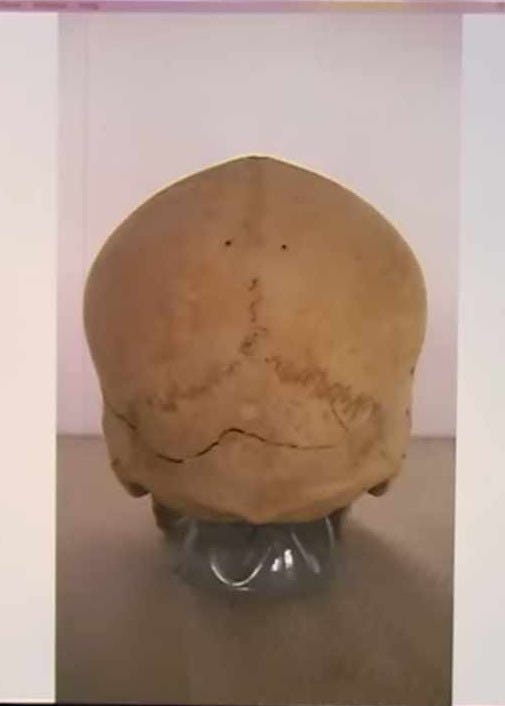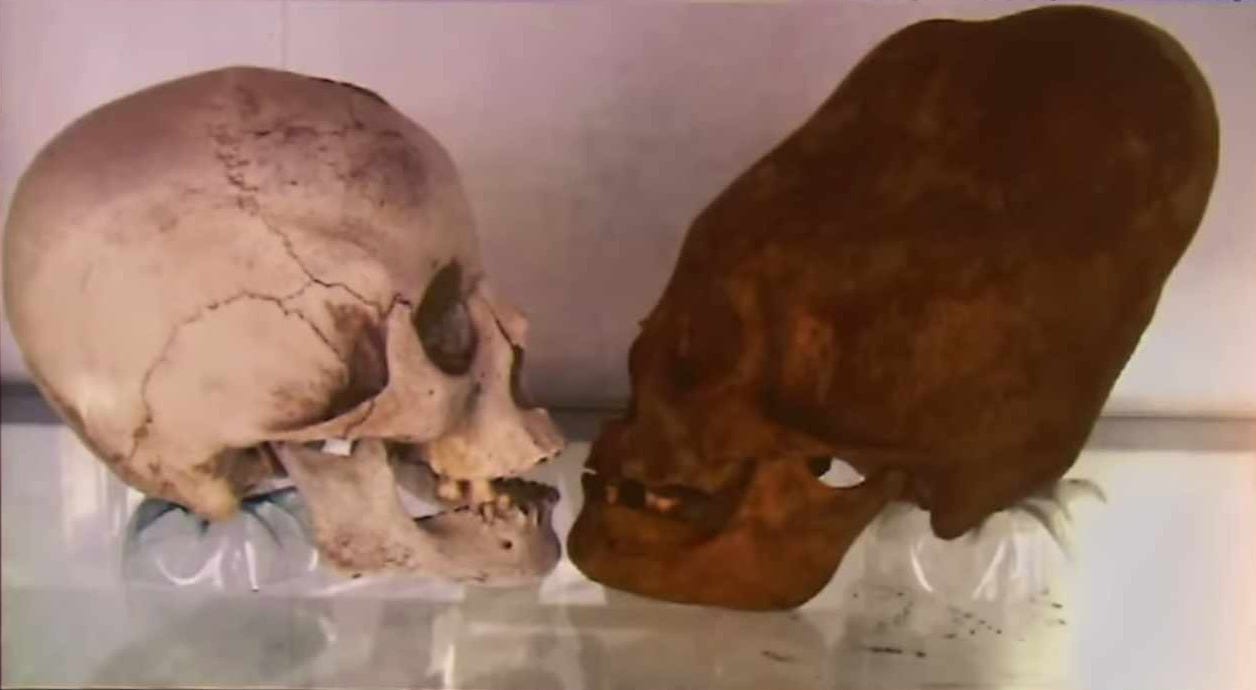Greetings and welcome to this edition of Wild Leaf! This publication began as an expressive immersion from the expanses of the West Elk Wilderness in the Rocky Mountains of Colorado. Writings born from off-grid living, goat tending, mothering and the general quietude of life married to the land, have been centralized here, alongside my inner journey and experience of the spiritual path.
However, as life has unfolded and we now find ourselves in the central Andes of Peru, a new thread of mystery has grabbed my attention, which I will begin to elucidate in this edition of Wild Leaf. It is a bit of a constellation from the work I have been previously presenting, but it is deeply intriguing, and I recommend readers check out the links provided in this article and also do your own research to see what you find out. The more I look, the more I find.
Again, a great many thanks to new and long-lasting paid subscribers for making this work a more legitimate endeavor of my energy. May it multiply. 🙏🏼
✧ ✧ ✧ ✧ ✧ ✧. ✧ ✧ ✧
“You were born into Beauty, as Beauty, for Joyful Life. That’s the truth.” - Pat McCabe, Diné Grandmother & Ceremonial Leader

Last week we traveled to Cuzco to see a Tibetan Buddhist Cham dance.
The day was decorated in skulls.
From the barista’s cappuccino design in the foamy milk, to the dancers at the Feast of St. Peter’s parade through the streets of Cuzco, to the anomalies in the underground Qorikancha museum and finally at the feet of the great Mahakala, skulls danced their way throughout my entire day. (Update: two days following this, I was walked to my own personal grave, where I was buried in the cold earth, as part of a deeply transformative Andean Burial ritual.)
Mahākāla in Sanskrit means “great” (maha) and “time/death” (kala). He is a dharma protector in Tibetan Buddhism and is considered one of the most fierce aspects of compassion, wrathfully uprooting negative tendencies, patterns and afflictions of mind and emotion. His association with Time and Death make him a fearful manifestation, heralding the powers of creation and destruction. His head is anointed with skulls and his body is enthroned in black flames as he dances atop a pile corpses.
Following the great meditation dance of Mahakala was the dance of Achi Chokyi Drolma, the great grandmother of Jigton Sumgon, who founded the Drikung Kagyu lineage of Tibet. Upon mention of her name, I was brought back to the Garchen Buddhist Institute in Arizona, where I spent precious time volunteering, learning and first (re)encountered this grandmother, whose very mention brings tears to my eyes.
In Tibetan Buddhism, Mahakala is invoked for spiritual protection and guidance along the rambling path towards self-liberation. The horns and drums used in the ritual represent instruments of war, but, also in the flavor of reclamation, we bring the war drums home to our inner being, to the inner battle, to cleanse, renew and uproot the sources of illusion that grow within each of us.
Meditation on skulls or in cemeteries, contemplation on the inevitability of death, time and decay, are all gateways that bring us closer home, to the Truth of who we are, unchanged by any passing moment or circumstance. Through the skulls we can encounter the eternal, Amara, the undying.
So, in the spirit of the bones, I would like to present my current research on the phenomenon found here in Peru and beyond, known as elongated skulls, a topic that has captivated my attention since I began my own mythological journey home, back to the roots, to the feminine origin of my own creation into being.
The story begins with what we found in the underground museum at the Qorikancha. Beneath what they call the Sacred Garden, just below the ancient megalithic site, there is a small museum with Incan artifacts and, surprisingly, a number of anomalous skulls. The skulls vary in size, anatomy and injury and are on display for all to see.
The Qorikancha site is full of fascinating phenomena, most of which are completely unknown to tourists and even local tour guides. This incredible video shows a few dowsers finding energetic flower petal patterns around the central stone tub, creating a highly potent energizing field towards whatever might have been put inside that tub in antiquity. There are subtleties everywhere, including Pleiadean alignments, unknown markings/glyphs on the roof, incredible energetic correspondences to an enormous amount of sacred sites around the region, and more.
For what I am about to present to you, I am deeply indebted to the incredible research and discoveries of Brien Foerster, a megalithic expert, explorer, author of 37 books and featured speaker in conferences and documentaries across the globe.
Elongated Skulls
Cranial deformation, that is, the practice of binding the skull soon after birth to create a permanent elongated skeletal shape, has been found all over the world and is always, without exception, connected to royal bloodlines. Even as recent as the 1950’s and 60’s, royal children in the Congo, who trace their lineage back through Sudan to ancient Egypt, were practicing cranial deformation. The practice was recently banned by both the government and missionary influence.
Melanesia, Malta, Russia, Austria, Guatemala, North America, Peru, Bolivia, central Asia, and Egypt, are all locations where evidence of elongated skulls have been found, unearthed from burial grounds as skeletons or mummies (some with hair intact), traded through grave robberies, or found through carvings, drawings or oral histories. According to Brien Foerster, Antarctica is the only continent in which no evidence of elongated skulls have been found, yet.
These ancient skulls are often hidden from the public, behind lock and key, in museum basements or in private collections.
In fact, when Brien first sent DNA samples from the famous and medically defying Huayqui mummy, first to a Russian company and then to a British company, he was left with no response. He has since crowdfunded over $50,000 dollars for private genetic testing and continues to unveil a mystery that, as he mentions over and over again, archeologists and scientists seem to be totally ignoring.
The Huayqui mummy’s mother was found to be Native American and the father is of origin completely unknown to earth.
The most ancient and anomalous elongated skulls have been dated from 2,000 - 8,000 years old and are found all over the planet, especially and oddly enough, linked to ancient megalithic sites.
The most numerous cache of these skulls (more than 300) have been found here in Peru, in a royal cemetery along the coast and ancient homeland of Paracas, as well as in a location where it looks like a great number of these elongated-skulled people were slaughtered. Beyond the killing field, those found in the royal cemetery, mummified and buried in intricate detail, are among the most interesting skulls on the planet. A number of these mummies have been found to have genetically (not dyed or faded) red hair, and, interestingly, the Nazca culture that later took over Paracas, spoke of their god, Kan, as having red hair.
According to this article, the Paracas skulls have “mitochondrial DNA ‘with mutations unknown in any human, primate, or animal known so far’.”
I want to mention a few anatomical realities.
First, you cannot, through head binding or other post-birth deformation techniques, increase the size of the human skull, you can only alter it. Secondly, you cannot, through head binding or other deformation techniques, alter the cranial suture arrangement on the skull. Thirdly, head binding or other cranial deformation techniques cannot alter the anatomy of the skull in terms of altered placement of foramen magnum, size of eye sockets, or the creation of completely new structures, such as pinholes in the back of the skull, such as these:
The famous Huayqui mummy, in a small museum outside of Cuzco, has an open fontanel, which indicates this person was under 2 years old at the time of death. However, this mummy has what appears to be a full set of teeth and one less set of ribs than the normal human. Also, her skull is the same size, if not bigger than, her torso. Medical professionals who have examined her agree that the shape and size of her head is not the result of head binding.
Various elongated skulls of antiquity have completely different cranial suture arrangement than any homo sapien that we know of today. For example, your skull and mine, have the crossing coronal suture connecting to the eye sockets, and perpendicular from that, we have the sagittal suture, which lines down the back of the skull, meeting the lambdoid sutures at the base of the skull. In the picture above from the Qorikancha museum, you will see two examples of anomalous cranial suture arrangements: one skull has no saggital suture, and another one has an extra suture down the front of the forehead.
Another odd phenomena we see, especially with older skulls, and as you can see above, is the complex shape of the elongation. For example, the skull, above right, has protrusions both on the front and back of the head that would be very difficult to create with head binding or other cranial deformation techniques. And again, the volume of the skull on the right is much larger (30-50% larger) than a normal homo sapien skull, which you also cannot achieve with head binding techniques.
Amazingly, when Brien Foerster finally performed DNA testing on a dozen or so of the Paracas skulls, it was found that they all had genetic ties to the Caspian Sea and the Black Sea.
Evidence is pointing to the fact that this ancient culture of Paracas, Peru, did not, contrary to popular belief, originate and evolve here in Peru, but actually migrated from Eastern Europe/Eastern Asia/Middle East.
So, on one hand, we have a story of elongated skulls as being the result of head binding and post-birth deformation techniques. However, what I am starting to see, is that there was, 2-8,000 years ago, a hybrid-human race, whose skulls and bones are found near *all* the megalithic sites built along the Capac Ñan, or “royal road”, through central Peru, whose technology and culture, to use a common word, were vastly different than anything they encountered, whether in Peru, Bolivia, Lebanon, Egypt, or beyond. Because of this, they were considered gods, became royalty, bred with native inhabitants, and the descendants who followed in those bloodlines, when the genetic cranial elongation eventually sifted out, continued to bind their skulls as a symbol of their ancient ancestry.
The most recent artistic representation of these ancient people, specific to Paracas, based on DNA test results, burial details and the skulls themselves, look like this:

Were these the ancient people known as the Amaraka? Connected to the Amarna dynasty in Egypt or the Amhara people of Ethiopia?
✧ ✧ ✧ ✧ ✧ ✧. ✧ ✧ ✧
Thank you for reading this edition of Wild Leaf. May it be of benefit to you and yours. If you like what you read, please consider becoming a paid subscriber. To support, you can always, Buy Me A Coffee.
Much love,
Leah










